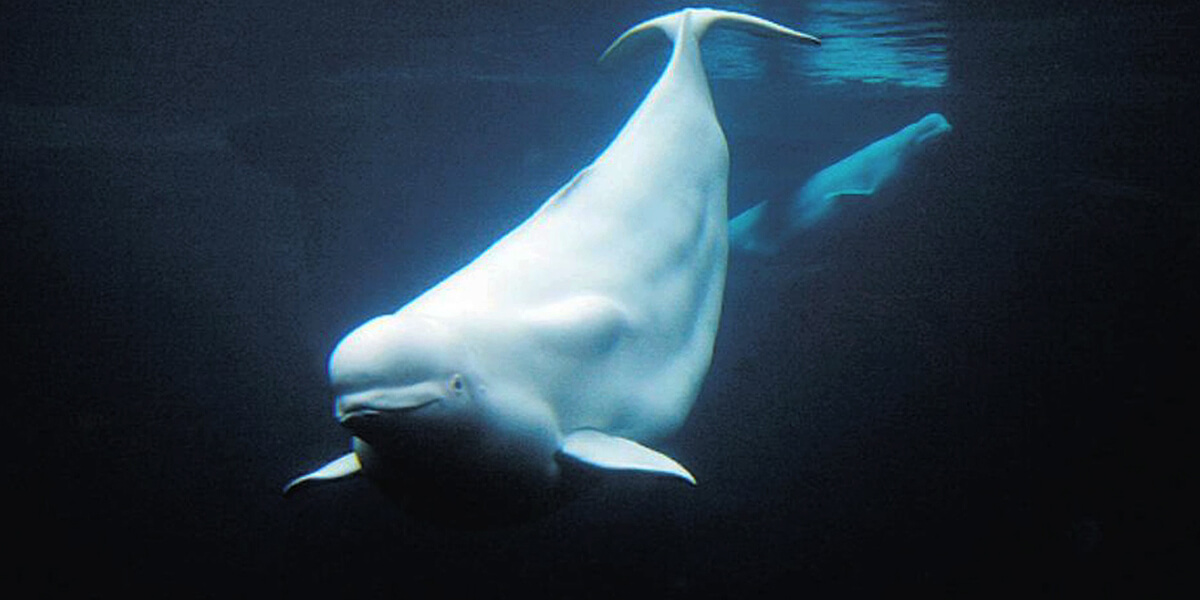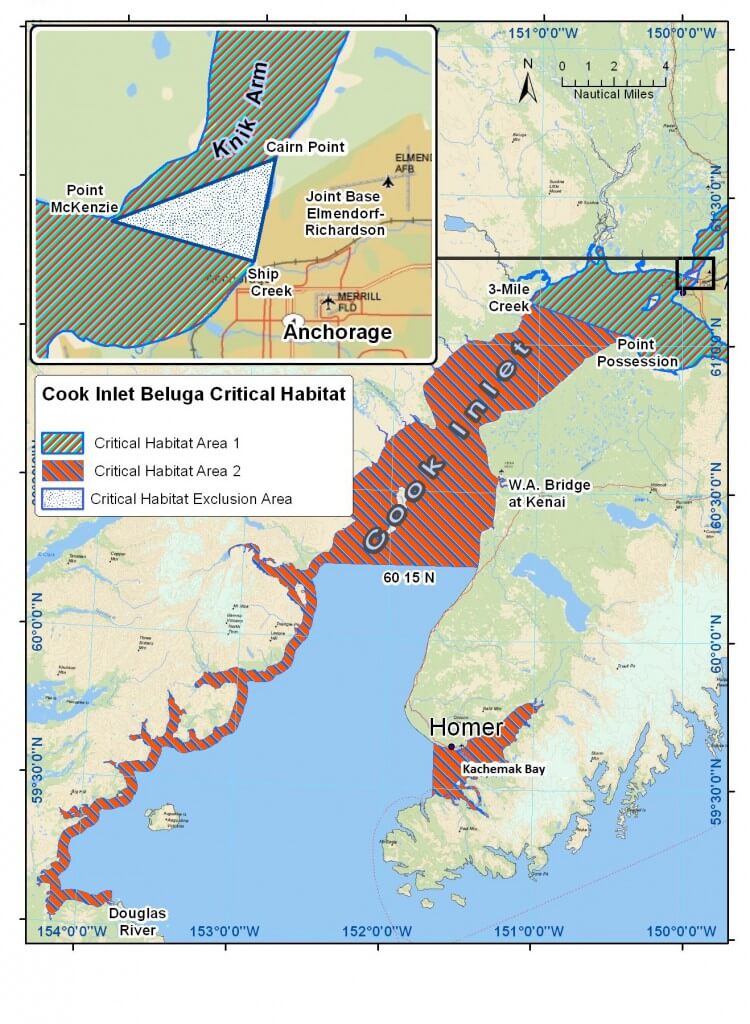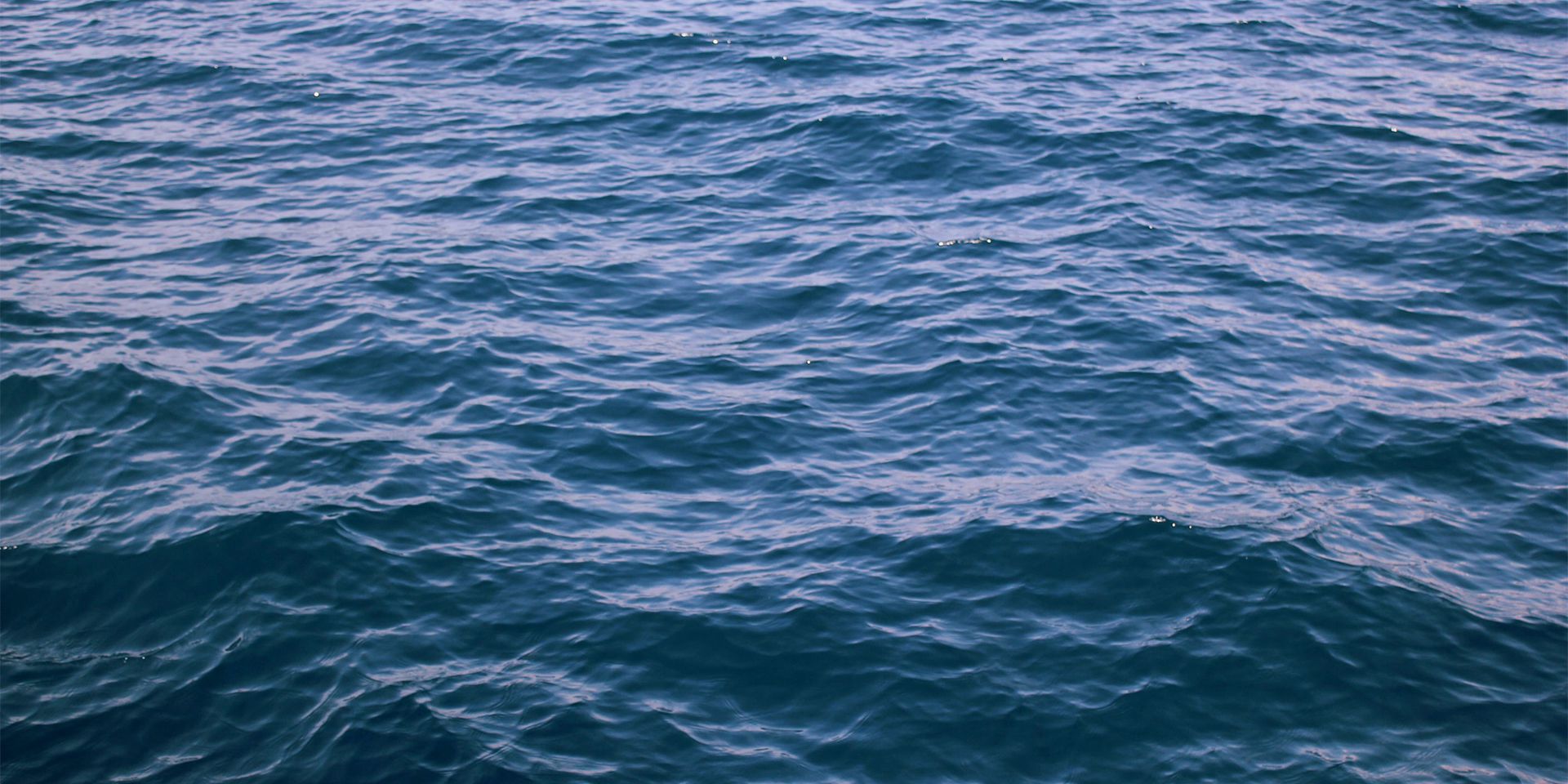Cook Inlet Beluga Whale
Beluga whales are found in seasonally ice-covered waters throughout arctic and sub-arctic regions. Five stocks are recognized in U.S. waters off Alaska, including one that is found almost exclusively in Cook Inlet. The endangered Cook Inlet beluga whale population is currently estimated at 331 individuals. The population has been experiencing an ongoing decline for more than two decades, although the latest abundance estimates from 2022 may indicate a reversal of that trend. The National Marine Fisheries Service (NMFS) selected this population for its Species in the Spotlight initiative to bring attention and focus to selected domestic marine species at risk of extinction.

Belugas in the Arctic. (NOAA)
Species Status
Abundance and Distribution
The Cook Inlet beluga whale stock was estimated to number about 1,300 animals at the time the Marine Mammal Protection Act (MMPA) was enacted in 1972, but it declined sharply in the 1990s. Between 1994 and 1998, the stock declined by approximately 50 percent due largely to unsustainable subsistence harvesting. It was assumed that once hunting was controlled in 1999, the population would begin to recover. NMFS listed the Cook Inlet beluga whale population as endangered under the Endangered Species Act (ESA) in 2008. Because the population, on average, has remained below 350 whales since then, no subsistence harvesting has been allowed under the applicable regulations.
The most recent abundance estimate for the Cook Inlet population is 331 individuals, based on aerial surveys conducted in June 2022. Although the 2022 abundance estimate is higher than the 2018 estimate of 279 individuals, and may indicate that the population is stabilizing or increasing, the low growth rate of this population, coupled with increasing human activities in beluga whale habitat in Cook Inlet, raise significant concerns about whether this population will be able to recover.
Distribution
Cook Inlet beluga whales are year-round residents of Cook Inlet, Alaska, exhibiting seasonal shifts in their distribution that are likely influenced by environmental factors, such as ice formation, and the availability of prey. During the ice-free months, Cook Inlet beluga whales are often concentrated in upper Cook Inlet, particularly near river mouths, such as the Susitna River delta, Chickaloon Bay, Turnagain Arm, and Knik Arm. In late fall, as fish runs end and ice forms in the upper inlet, belugas disperse into smaller groups and some migrate southward to deeper waters in the middle and lower portions of Cook Inlet. Their historic range has contracted, now predominantly focused in the upper inlet, though winter surveys and acoustic monitoring confirm continued seasonal use of the middle and lower Cook Inlet.
Critical Habitat
Two areas within Cook Inlet have been designated as critical habitat. These areas include all waters in the upper inlet except for a small exclusion area at the mouth of Knik Arm, nearshore areas in the southwestern part of the inlet, and Kachemak Bay on the eastern side of the inlet.

Map of Cook Inlet beluga whale critical habitat. (NOAA)
Status Review
In 2017, NMFS issued its first five-year status review for the Cook Inlet distinct population segment of beluga whales. The ESA requires status reviews to be conducted every five years for listed species. The review determined that although the population is not increasing as expected, it is not declining precipitously, and, therefore, the probability of extinction is lower than in previous analyses. The review also stated that the population appears to be consolidated into the upper part of Cook Inlet for much longer periods of time each year. The upper part of Cook Inlet is beluga whale habitat that is most prone to the effects of human development. NMFS announced its intent to conduct a subsequent five-year status review in February 2021, requesting new information on the status, threats, and recovery of Cook Inlet beluga whales that may have become available since the previous status review in 2017. NMFS completed its second five-year status review in September 2022, concluding that the Cook Inlet beluga whale population should retain its status as endangered.
What the Commission Is Doing
The Marine Mammal Commission has focused on efforts to conserve the Cook Inlet beluga whale since the mid-1990s. In 2015, the Commission commented on NMFS’s Draft Recovery Plan for the Cook Inlet Beluga Whale. The Commission recommended that NMFS(1) give high priority to research directed at understanding the causes of the observed population trends, (2) support continuation of ongoing photo-identification work, (3) proceed cautiously in pursuing a large-scale biopsy research program for the population, (4) develop a robust plan for responding to stranding events, (5) fund annual abundance surveys, and (6) develop mechanisms for assessing cumulative impacts from multiple stressors on the population. The Commission continues to recommend in its letters regarding incidental take applications that NMFS and other agencies refrain from issuing authorizations for additional human activities in Cook Inlet that could affect beluga whales until they have a better basis for concluding that those activities will not exacerbate an already significant risk of extinction.
The Commission also continues to monitor implementation of the recovery plan and associated research and management actions, as a member of the Habitat and Threats Committee under the Cook Inlet Beluga Whale Recovery Implementation Task Force.
Commission Reports and Publications
For more information on the Cook Inlet beluga whale, see the Commission’s 2012 annual report (pages 59 – 63).
Commission Letters
| Letter Date | Letter Description |
|---|---|
| August 12, 2024 | |
| December 13, 2021 | Letter to BOEM on its draft environmental impact statement for Cook Inlet Lease Sale 258. |
| September 16, 2019 | |
| August 5, 2019 | |
| May 1, 2019 | |
| March 29, 2018 | |
| October 5, 2017 | |
| September 6, 2016 | |
| July 13, 2016 | |
| March 28, 2016 | |
| March 7, 2016 | |
| September 11, 2015 | |
| July 24, 2015 | |
| July 14, 2015 | Letter to NMFS regarding comments regarding the draft Cook Inlet beluga whale recovery plan |
| April 20, 2015 | |
| April 13, 2015 | |
| December 29, 2014 | |
| December 8, 2014 | |
| October 14, 2014 | |
| September 4, 2014 | |
| January 9, 2013 | |
| May 7, 2012 | Letter to BOEM regarding the Proposed Cook Inlet Special Interest Lease Sale 244 |
| October 21, 2011 | |
| October 3, 2011 | |
| March 7, 2011 | |
| January 21, 2011 | Letter to NMFS regarding scientific independence of members of the Cook Inlet Whale Recovery Team |
| June 28, 2010 | Letter to NMFS regarding efforts to recover the Cook Inlet beluga whale population |
| March 29, 2010 | |
| March 3, 2010 |
Learn More
Threats
Based on a long time series of abundance estimates, it is clear that some factor or combination of factors is impeding the recovery of the Cook Inlet beluga whale from a precipitous decline due to overharvest by subsistence hunters during the 1990s.
Recovery Plan
NMFS finalized the Cook Inlet Beluga Whale Recovery Plan in December 2016. The recovery plan identified ten potential threats and ranked them in order of their overall relative concern to the Cook Inlet beluga population, as follows:
Threats of High Relative Concern
- Catastrophic events (e.g., natural disasters; spills; mass strandings);
- Cumulative effects of multiple stressors; and
- Noise.
Threats of Medium Relative Concern
- Disease agents (e.g., pathogens, parasites, and harmful algal blooms);
- Habitat loss or degradation;
- Reduction in prey; and
- Unauthorized take.
Threats of Low Relative Concern
- Pollution;
- Predation; and
- Subsistence hunting.
Current Conservation Efforts
Current conservation efforts for the Cook Inlet beluga whale are guided by the Recovery Plan, which includes: 1) a description of site-specific management actions that are necessary to achieve the plan’s goal for the conservation and survival of the Cook Inlet belugas, 2) objective, measurable criteria which, when met, would result in a determination that the Cook Inlet belugas may be removed from the ESA, and 3) estimates of the time required and the cost to carry out those measures needed to achieve the plan’s goal and to achieve intermediate steps toward that goal.
NMFS has established a Cook Inlet Beluga Whale Recovery Implementation Task Force, which is overseen jointly by NMFS and the Alaska Department of Fish & Game (ADF&G). The purpose of the Task Force is to advise NMFS and ADF&G on issues related to the recovery of beluga whales in Cook Inlet, including practicable and effective ways to implement the recovery plan. The Task Force is also a forum to increase communication and coordination between agencies and stakeholders working to recover Cook Inlet beluga whales. The Task Force has an Executive Leadership Panel, Recovery Coordinators, and three Committees focused on Research, Habitat and Threats, and Outreach.
The Commission participates on the Task Force’s Habitat and Threats Committee. The Habitat and Threats Committee is focused on 1) improving the understanding of the existing habitat and threats, 2) identifying and assessing other potential threats to Cook Inlet beluga whales, 3) assessing the degree to which known and other potential threats are impeding recovery, and 4) identifying ways to improve mitigation or abatement of threats.
The Commission sees NMFS’s selection of Cook Inlet beluga whales under Species in the Spotlight initiative as an opportunity to focus research efforts on identifying the causes of the population’s decline and management actions that can be taken to reverse that trend.
Additional Resources
NMFS Species Overview – Beluga Whales
NMFS Species in the Spotlight: Priority Actions 2021-2025 for Cook Inlet Beluga Whale
Cook Inlet Beluga Whale Photo-ID Project
NMFS 2021 Stock Assessment Report – Cook Inlet Beluga Whale
Help Belugas – How the Public Can Help Study and Conserve Cook Inlet Beluga Whales
International Union for Conservation of Nature (IUCN) Global Assessment of Beluga Whales
